#Ural Polytechnical Institute
Explore tagged Tumblr posts
Text
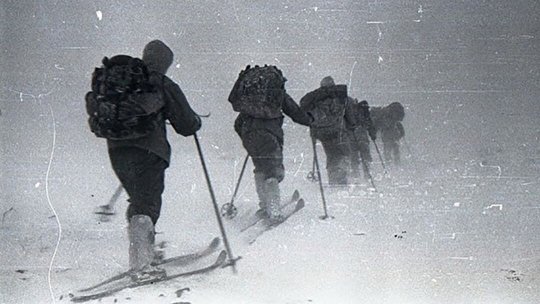
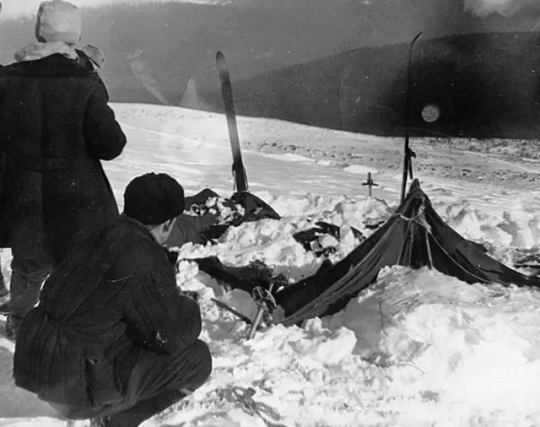
In 1959, a group of nine students from the Ural Polytechnical Institute set out on an expedition through the Ural Mountains in the Soviet Union. Led by Igor Dyatlov, the group aimed to reach the summit of Otorten, a remote and challenging peak. Unfortunately, their journey would end in one of the most perplexing and eerie mysteries of the 20th century.
The group left in January of that year, fully equipped and with considerable experience in handling cold-weather treks. However, not long after the journey began, one member, Yuri Yudin, became ill and had to return home, a decision that would ultimately spare his life. The remaining hikers continued their trek, moving across the slopes of Kholat Syakhl, a mountain ominously known as "Dead Mountain" among the local Mansi people.
Their last communication was on January 31, when Dyatlov sent a message stating that they were progressing, though delayed by harsh weather conditions. It wasn't until the group failed to return home as scheduled that a search and rescue operation began.
On February 26, searchers made a strange discovery: the group’s tent was found abandoned and slashed open from the inside. Oddly, most of their equipment and warm clothing were left behind, suggesting that they fled in a hurry despite the bitter cold.
Following a trail of footprints leading away from the tent, rescuers eventually found the bodies of five of the hikers. They were in various stages of undress, with two found near a makeshift fire beneath a large cedar tree. The others were scattered between the tree and the tent. It appeared as though they had succumbed to the freezing temperatures as they attempted to return to shelter.
It wasn't until May, two months later, that the remaining four bodies were discovered further into the woods, buried in snow within a ravine. These hikers had suffered far more serious injuries. Two had fatal chest trauma, and another had a severe skull fracture. Disturbingly, one of the women was missing her tongue, eyes, and part of her lips.
What else struck the searchers as peculiar was that some of the victims' clothing was found to be radioactive. Despite extensive investigations, no definitive cause of death was ever determined. The official Soviet report vaguely concluded that the hikers had died due to "an unknown compelling force."
Over the years, various theories have been proposed to explain what happened at Dyatlov Pass. Some suggest that an avalanche may have forced the group to flee the tent in panic, although there is little evidence to support the occurrence of an avalanche in the area.
Another theory suggested that wind-induced infrasound might have triggered extreme fear and irrational behavior among the hikers. However, this theory does not adequately account for the severe physical injuries observed in some of the victims.
More controversial speculations involve secret Soviet military tests or experiments, particularly given the radiation detected on the victims' clothing. Some theories even venture into the realm of the paranormal, suggesting that the hikers may have encountered a yeti or extraterrestrial beings, though these ideas are often dismissed as implausible.
62 notes
·
View notes
Text
The 10 Greatest Mysteries on Earth That Defy Explanation
youtube
"Mysteries on Earth that remain unsolved" refer to strange or unexplained events, phenomena, or discoveries that scientists, historians, and researchers have not been able to fully understand or explain. These mysteries may involve paranormal activities, lost civilizations, bizarre disappearances, unidentified objects, or natural phenomena with unknown causes.”
The Bermuda Triangle: A Mysterious Region
The Bermuda Triangle, also known as the Devil’s Triangle, is a mysterious area in the North Atlantic Ocean, roughly forming a triangle between Miami (Florida), Bermuda, and Puerto Rico. It has become infamous for the unexplained disappearances of ships and airplanes, with no wreckage or distress signals often found. Despite many theories, the true cause of these vanishings remains unknown.
Famous Disappearances
Some of the most well-known cases include:
USS Cyclops (1918) – A U.S. Navy ship with 300 crew members disappeared without a trace.
Flight 19 (1945) – Five U.S. Navy bombers on a training mission vanished, along with a rescue plane sent to find them.
Star Tiger and Star Ariel (1948, 1949) – Two British aircraft disappeared while flying over the Bermuda Triangle.
SS Marine Sulphur Queen (1963) – A tanker ship with 39 crew members was lost, with only small debris found.
These incidents, along with many others, have fueled speculation about what could be causing such mysterious disappearances.
Possible Explanations
Magnetic Anomalies – Some believe the region affects compasses and navigation systems, leading to disorientation.
Rogue Waves – Massive waves, over 100 feet high, could easily sink ships and damage aircraft.
Methane Gas Eruptions – Underwater gas bubbles may reduce water density, causing ships to sink rapidly.
Extreme Weather – Sudden storms and hurricanes may explain many accidents.
Extraterrestrial Theories – Some believe UFOs, time warps, or even the lost city of Atlantis are involved.
The Voynich Manuscript: A Mysterious Book
The Voynich Manuscript is a 600-year-old book, written in an unknown language, filled with bizarre illustrations of unidentified plants, strange symbols, and astronomical diagrams. Discovered in 1912 by rare book dealer Wilfrid Voynich, it is considered one of the greatest unsolved mysteries in linguistics and cryptography.
The Mystery of the Text
The manuscript, believed to date back to the 15th century, contains around 240 pages of strange symbols and an undeciphered script that does not match any known language. Despite efforts by linguists, cryptographers, and AI researchers, its meaning remains unknown. Some believe it is written in a lost language, a coded cipher, or even a meaningless hoax.
Strange Illustrations
The manuscript features mysterious drawings, including:
Unidentified Plants – No known species match these botanical illustrations.
Astronomical Symbols – Complex star maps and zodiac-like diagrams.
Human Figures – Strange women bathing in interconnected tubes, possibly representing alchemy or biology..
Possible Explanations
A Lost Language – Some experts believe it is written in an extinct or unknown script.
A Complex Cipher – Others think it is an advanced code, yet to be cracked.
A Hoax – Some suggest it is a meaningless medieval prank.
Alien or Supernatural Origins – A few theorists even claim it has extraterrestrial connections.
The Dyatlov Pass Incident: A Chilling Mystery
The Dyatlov Pass Incident remains one of the most bizarre and unexplained tragedies in modern history. In 1959, nine experienced hikers from the Ural Polytechnic Institute embarked on a trek in the Ural Mountains of Soviet Russia. Days later, all were found dead under mysterious circumstances, with injuries that defied logical explanation.
The Discovery of the Bodies
Rescue teams found the hikers’ tent torn from the inside, as if they had fled in panic. Their bodies were discovered scattered across the snowy landscape, some in only socks and underwear, despite freezing temperatures. The most disturbing findings included:
Severe Internal Injuries – Some victims had broken ribs and skull fractures, similar to a car crash impact, but with no external wounds.
Missing Eyes and Tongues – Two hikers were found with missing eyes, and one had no tongue, raising suspicions of an attack.
Signs of Radiation – Traces of radiation were found on their clothing.
Possible Explanations
Avalanche Theory – A small snow slide may have forced them to flee, leading to fatal injuries.
Katabatic Winds – Powerful, invisible winds could have disoriented the hikers.
Military Tests – Some believe they stumbled upon secret Soviet experiments, exposing them to radiation.
Paranormal Theories – Some suggest UFOs, Yeti attacks, or even supernatural forces.
The Wow! Signal: A Cosmic Mystery
The Wow! Signal is one of the most intriguing space mysteries ever recorded. On August 15, 1977, astronomer Jerry Ehman detected a strong radio signal while scanning deep space using the Big Ear Radio Telescope at Ohio State University. The signal, which lasted 72 seconds, was so unusual that Ehman circled it on the printout and wrote "Wow!", giving it its famous name.
What Made It Special?
The Wow! Signal stood out because:
It came from deep space, near the constellation Sagittarius.
It was 30 times stronger than normal background noise.
It lasted 72 seconds, the exact time the telescope could listen to a fixed point before the Earth’s rotation moved it away.
It has never been detected again, despite multiple follow-up searches.
Theories Behind the Signal
Scientists have proposed several explanations, but none have been confirmed:
Extraterrestrial Origin – Some believe it was a signal from an advanced alien civilization trying to communicate.
Natural Cosmic Phenomenon – It could have been from a pulsar, quasar, or another unknown space event.
Earth-Based Interference – A radio transmission from a satellite or a secret military source might have caused it.
Comet Theory – Some suggest it was a signal reflected from a passing comet, though this remains debated.
Jack the Ripper’s Identity: A Chilling Mystery
In 1888, a serial killer known as Jack the Ripper terrorized the Whitechapel district of London, brutally murdering at least five women. His victims were often found mutilated, with their throats slashed and internal organs removed. Despite extensive investigations, the killer’s identity remains one of history’s greatest unsolved mysteries.
The Victims and Killings
The confirmed victims, known as the "Canonical Five," were:
Mary Ann Nichols (August 31, 1888) and Annie Chapman (September 8, 1888)
Elizabeth Stride (September 30, 1888) and Catherine Eddowes (September 30, 1888)
Mary Jane Kelly (November 9, 1888)
Possible Suspects
Over the years, many theories have emerged about Jack the Ripper’s true identity. Some notable suspects include:
Montague John Druitt – A mentally unstable lawyer who disappeared after the murders.
Aaron Kosminski – A Polish barber suspected due to recent DNA analysis of a blood-stained shawl.
Dr. Thomas Cream – A doctor convicted of poisoning women, though he was imprisoned during the murders.
Prince Albert Victor – A theory suggests a royal cover-up, though it lacks evidence.
Why Was He Never Caught?
Victorian-era forensic science was limited, and the police lacked modern investigation techniques like fingerprinting or DNA analysis. The killer’s sudden disappearance also deepened the mystery.
Despite countless theories, Jack the Ripper’s identity remains unknown, making him one of history’s most notorious and elusive criminals.
The Taos Hum: An Unexplained Sound
The Taos Hum is a mysterious, low-frequency humming noise reported by residents of Taos, New Mexico. First documented in the 1990s, this strange sound has puzzled scientists and researchers because only some people can hear it, while others perceive complete silence.
Characteristics of the Hum
Described as a low, distant droning noise, similar to a diesel engine idling.
Heard indoors more than outdoors. Most commonly reported at night.Only 2% of Taos residents claim to hear it.
Scientific Investigations
Numerous studies have tried to determine the source of the Taos Hum, but none have reached a definitive conclusion. Theories include:
Industrial or Electromagnetic Signals – Some believe the sound could be caused by power lines, radio waves, or underground gas pipelines.
Tinnitus – A medical condition that causes ringing in the ears, but this theory is unlikely since multiple people report hearing the same sound.
Geological Activity – Subterranean vibrations, shifting tectonic plates, or underground water flow could produce the hum.
Psychological Phenomenon – Some scientists suggest it might be a case of mass hysteria or heightened auditory sensitivity.
The Sailing Stones of Death Valley: A Natural Mystery
In Death Valley, California, large rocks mysteriously move across the desert floor, leaving behind long, visible trails in the Racetrack Playa, a dry lakebed. Weighing up to 700 pounds (318 kg), these "sailing stones" shift without human or animal interference, and no one has ever directly witnessed their movement.
Observations and Theories
For over a century, scientists and visitors have puzzled over this phenomenon. Early theories suggested strong winds, magnetic forces, or supernatural explanations, but modern research provides a more scientific perspective.
Wind Theory – Some believed powerful desert winds pushed the rocks, but their weight made this unlikely.
Ice Floe Theory – In 2014, researchers caught the stones moving on camera. They discovered that thin ice sheets form around the rocks on rare wet nights. As the ice melts under the sun, gentle winds push the floating ice, slowly dragging the rocks along the muddy surface.
Water and Mud Lubrication – Rainfall creates a slick surface, reducing friction, allowing wind or gravity to move the stones.
The First Recorded Movement
In 2014, researchers with time-lapse cameras finally witnessed the stones moving. Under the right conditions, thin ice sheets break apart and push the rocks at speeds of 2–5 meters per minute.
Though no supernatural forces are at play, the Sailing Stones remain a rare and fascinating natural event, proving how unique weather conditions can create seemingly impossible movements in the hottest place on Earth.
The Lost City of Atlantis: Myth or Reality?
The Lost City of Atlantis is one of history’s greatest mysteries. First mentioned by the Greek philosopher Plato in 360 BCE, Atlantis was described as a powerful and advanced civilization that mysteriously disappeared beneath the ocean thousands of years ago. Despite numerous theories and searches, its existence remains unproven.
Plato’s Description
Plato wrote about Atlantis in his dialogues “Timaeus” and “Critias.” He described it as:
A highly advanced society with great wealth, technology, and military power. Located beyond the “Pillars of Hercules” (believed to be the modern-day Strait of Gibraltar).A vast island nation that sank in a single day and night due to a great catastrophe, possibly an earthquake or tsunami.
Theories About Atlantis
Over the centuries, many theories have emerged regarding Atlantis’s possible location and fate:
Santorini, Greece – Some believe Atlantis was inspired by the Minoan civilization, which was devastated by a massive volcanic eruption around 1600 BCE.
The Bahamas / Bimini Road – Underwater rock formations near the Bahamas resemble ancient roads, leading some to link them to Atlantis.
Antarctica Theory – Some speculate that Atlantis could be buried beneath the ice of Antarctica due to shifting continents.
Pure Myth – Many scholars argue Atlantis was a fictional story meant to serve as a moral lesson about the dangers of greed and arrogance.
The Kryptos Sculpture Mystery: A CIA Enigma
The Kryptos sculpture, located outside the CIA headquarters in Langley, Virginia, is one of the world's greatest unsolved cryptographic puzzles. Created by artist Jim Sanborn in 1990, it contains four encrypted messages. While cryptographers and intelligence experts have solved three of them, the fourth remains a mystery to this day.
The Structure and Its Codes
The sculpture consists of a curved copper sheet, covered in 1,800 characters arranged in an encrypted text. Sanborn collaborated with a former CIA cryptographer, Ed Scheidt, to design the ciphers, which incorporate techniques like transposition and substitution ciphers.
The First Three Solved Messages
Message 1 – A passage describing hidden information buried somewhere.
Message 2 – A reference to magnetic fields and their role in encryption.
Message 3 – A quote from Howard Carter, the discoverer of King Tut’s tomb, describing the moment of discovery.
The Unsolved Fourth Message
The final 97-character segment of Kryptos remains unsolved, despite attempts by world-class cryptographers, including those at the CIA and NSA. In 2010 and 2014, Sanborn released two hints, revealing that the words "BERLIN" and "CLOCK" are part of the final solution, possibly referencing the famous Berlin Clock (Set Theory Clock).
Why It Remains Unsolved
Highly complex encryption may involve multiple layers of ciphers.
Misleading elements could be designed to confuse solvers.
Unknown key needed for decryption remains undiscovered.
The Zodiac Killer’s Final Cipher: An Unsolved Mystery
The Zodiac Killer was a notorious serial killer who terrorized Northern California in the late 1960s and early 1970s. He is linked to at least five confirmed murders, though he claimed to have killed 37 people. What makes him unique is his habit of taunting the police and media with coded letters and cryptic ciphers, some of which remain unsolved.
The Zodiac’s Ciphers
The Zodiac Killer sent four ciphers (known as Z408, Z340, Z32, and Z13) in letters to newspapers, daring the public to crack them:
Z408 (Solved in 1969) – This was the first cipher, solved by a schoolteacher and his wife. It contained a disturbing message about hunting humans for pleasure but gave no clues to his identity.
Z340 (Solved in 2020) – A team of cryptographers cracked this 51-year-old cipher, revealing a message mocking the police and claiming he was not afraid of capture.
Z32 (Still Unsolved) – This 32-character cipher is believed to contain clues about a bomb he threatened to plant, but its meaning remains unknown.
Z13 (Still Unsolved) – This is the so-called “My Name Is” cipher, which could contain the Zodiac's real name, but has never been cracked.
Despite scientific advancements, many mysteries on Earth remain unexplained. The Bermuda Triangle, the Wow! Signal, and the Dyatlov Pass Incident continue to baffle experts. Ancient enigmas like the Voynich Manuscript and the Lost City of Atlantis fuel speculation, while modern puzzles like the Zodiac Killer’s cipher and the Taos Hum remain unresolved. These mysteries challenge our understanding of history, science, and even the possibility of extra-terrestrial life. While researchers strive for answers, some of these phenomena may never be fully explained, reminding us of the vast unknowns still waiting to be discovered in our world and beyond.
#history's greatest mysteries#history's greatest mysteries clips#history's greatest mysteries full episodes#john wilkes booth#valentines day massacre#investigation#valentines day massacre documentary#documentaries#abraham lincoln#history channel documentaries#monsters#valentines day massacre al capone#the unxplained zone#history documentary#history shows#valentines day massacre movie#aliens#valentines day massacre chicago#laurence fishburne#the history channel#Youtube
0 notes
Text
The Dyatlov Pass Incident
In 1959, nine experienced hikers from the Ural Polytechnical Institute set out on a trek in the Ural Mountains of Russia. Led by Igor Dyatlov, the group established a camp on the eastern slopes of Kholat Syakhl. Overnight, something caused them to cut their way out of their tent and flee into the freezing conditions, inadequately dressed. When their bodies were discovered, six had died from hypothermia, while three had fatal injuries: one with major skull damage, and two with severe chest trauma. Notably, some were missing eyes, and one was missing a tongue. The investigation concluded that a compelling natural force had caused the deaths. Numerous theories have been proposed, including animal attacks, hypothermia, an avalanche, katabatic winds, infrasound-induced panic, military involvement, or some combination of these factors. In 2019, Russia reopened the investigation, and in 2020, it was concluded that an avalanche had led to the deaths. However, the incident remains a subject of speculation and mystery.
My Thoughts & Theories
This case is one of the most unsettling mysteries ever. The fact that they cut their way out of the tent makes me think they were absolutely terrified of something. The military experiment theory makes the most sense to me maybe they were exposed to some kind of secret weapon. But at the same time, how do you explain the missing tongue and eyes?

1 note
·
View note
Text
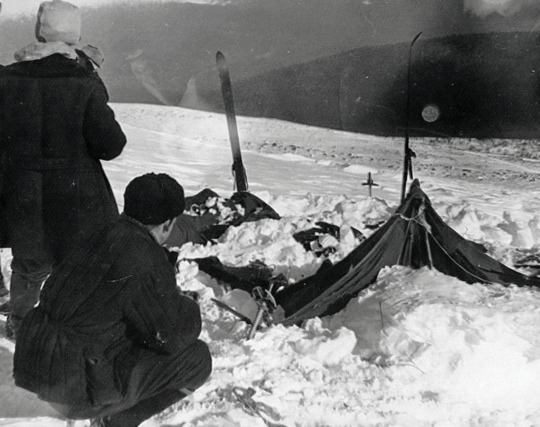
Soviet investigators examine the tent belonging to the Dyatlov Pass expedition on February 26, 1959. The tent had been cut open from inside, and many team members had fled in socks or bare feet. Photograph Courtesy of the Dyatlov Memorial Foundation
Has Science Solved One of History’s Greatest Adventure Mysteries?
The bizarre deaths of hikers at Russia's Dyatlov Pass have inspired countless conspiracy theories, but the answer may lie in an elegant computer model based on surprising sources.
— By Robin George Andrews | January 28, 2021
A 62-year-old adventure mystery that has prompted conspiracy theories around Soviet military experiments, Yetis, and even extraterrestrial contact may have its best, most sensible explanation yet—one found in a series of avalanche simulations based in part on car crash experiments and animation used in the movie Frozen.
In an article published today in the journal Communications Earth and Environment, researchers present data pointing to the likelihood that a bizarrely small, delayed avalanche may have been responsible for the gruesome injuries and deaths of nine experienced hikers who never returned from a planned 200-mile adventure in Russia’s Ural Mountains in the winter of 1959.

Film recovered from the scene shows the last photograph taken by the Dyatlov team of members cutting the snow slope to erect their tent. Photograph Courtesy of the Dyatlov Memorial Foundation
In what has become known as the Dyatlov Pass incident, ten members of the Urals Polytechnic Institute in Yekaterinburg—nine students and one sports instructor who fought in World War II—headed into the frigid wilderness on a skiing and mountaineering expedition on January 23, 1959.
One student with joint pain turned back, but the rest, led by 23-year-old engineering student Igor Dyatlov, continued on. According to camera film and personal diaries later found on the scene by investigators, the team made camp on February 1, pitching a large tent on the snowy slopes of Kholat Saykhl, whose name can be interpreted as “Dead Mountain” in the language of the region’s Indigenous Mansi people.

The nine—seven men and two women—were never heard from again.
When a search team arrived at Kholat Saykhl a few weeks later, the expedition tent was found just barely sticking out of the snow, and it appeared cut open from the inside. The next day, the first of the bodies was found near a cedar tree. Over the next few months, as the snow thawed, search teams gradually uncovered more spine-chilling sights: All nine of the team members’ bodies were scattered around the mountain’s slope, some in a baffling state of undress; some of their skulls and chests had been smashed open; others had eyes missing, and one lacked a tongue.
Each body was a piece in a grim puzzle, but none of the pieces seemed to fit together. A criminal investigation at the time blamed their deaths on an “unknown natural force,” and the Soviet bureaucracy kept the case quiet. The lack of detail about this shocking event, an apparent massacre that transpired in a deeply secretive state, gave rise to dozens of long-lived conspiracy theories, from clandestine military tests to Yeti attacks.
In The Dead of Winter
In the wake of renewed media interest and pervasive outlandish hypotheses, Russian authorities recently reexamined the case around the Dyatlov Pass incident and concluded in 2019 that an avalanche was primarily responsible for the nine deaths. Key scientific details were absent from the report, however, including a clear explanation as to how an avalanche could have taken place with no documented evidence of its occurrence left behind. This led to continued doubts around the seemingly pat explanation from a government long infamous for its lack of transparency.
“People Love To Invent Implausible Scenarios About Death In The Wilderness, Because We Will Never Know 100 Percent What Happened.” — Freddie Wilkinson, Professional Mountain Climber and Guide
Many argued that the avalanche theory, initially proposed in 1959, still didn’t seem to stack up: The team’s tent encampment was cut into the snow on a slope with an incline seemingly too mild to permit an avalanche. There was no snowfall on the night of February 1 that could have increased the weight of the snow burden on the slope and triggered a collapse. Most of the blunt force trauma-like injuries and some of the soft tissue damage were atypical of those caused by avalanches, whose victims usually asphyxiate. And if an avalanche had occurred, why was there a gap of at least nine hours, according to forensic data, between the team members cutting the slope for their encampment and the eventual avalanche?
That curious delay was of particular interest to Alexander Puzrin, a geotechnical engineer at ETH Zürich, one of Switzerland’s federal institutes of technology. He had recently published a paper explaining how, strange though it may seem, an earthquake can trigger an avalanche with a gap ranging from mere minutes to several hours between the two events. While Puzrin grew up in Russia, he learned of the Dyatlov Pass story only a decade ago. He was fascinated by the infamous incident and what may have caused it, but was understandably wary of tackling the question solo.
Johan Gaume, head of the Snow Avalanche Simulation Laboratory at EPFL, another Swiss federal technical institute in Lausanne, got to know Puzrin around the time of the 2019 Russian inquiry into what happened at Dyatlov Pass. Suspecting the avalanche delay issue held one of the keys to solving the mystery, they teamed up to create analytical models and computer simulations to try and replicate the obfuscated hours that stole the mountaineers’ lives.
The scientific investigation came with an added benefit from Puzrin’s wife, who is Russian. “When I told her that I was working on the Dyatlov mystery, for the first time she looked at me with real respect,” he says.
Countering The Counterarguments
The shallow slope argument against an avalanche was tackled early on: It turned out not to be all that shallow after all. The undulating topography on Kholat Saykhl, covered by snowfall, made the slope appear mild, but it was actually closer to 30 degrees, the rule-of-thumb minimum requirement for many avalanches. Reports dating back to the site’s initial investigation also describe an underlying snow layer on the mountain that didn’t clump together, providing a weak, slippery base that a lot of overlying snow could easily slide over.
“The local topography played a trick on them,” says Puzrin.
Then there was the question of the snow mass: The cut the team made in the snow to pitch their tent destabilized the slope, but additional snow had to have collected before any avalanche could happen. While weather reports record no snow that fateful night, the Dyatalov group’s diary entries note there were very strong winds. These were likely to be katabatic winds—heavy clumps of frigid air that brought large amounts of snow from higher up down toward the campsite, increasing the load on an already precarious slope and explaining the nine-hour delay between the snow cut and the avalanche.
The researchers’ computer simulations show the avalanche on Kholat Saykhl wouldn’t have been huge, perhaps involving a block of icy matter a mere 16 feet long—about the size of an SUV. The small size explains why no evidence for an avalanche was found during the initial investigation; it would have infilled the cut-out campsite before being quickly buried by fresh snowfall. But how could such a small collapse have caused such traumatic injuries?
Let It Go, Let It Go
To answer that question, the scientists relied on some unorthodox sources of inspiration and information. Gaume explained how, a few years back, he was struck by how well the movement of snow was depicted in the 2013 Disney movie Frozen—so impressed, in fact, that he decided to ask its animators how they pulled it off.
Following a trip to Hollywood to meet with the specialist who worked on Frozen’s snow effects, Gaume modified the film’s snow animation code for his avalanche simulation models, albeit with a decidedly less entertaining purpose: to simulate the impacts that avalanches would have on the human body.
“People Don’t Want It To Be An Avalanche. It’s Too Normal.” — Johan Gaume, Snow Avalanche Simulation Laboratory, EPFL
Code in hand, the pair then needed realistic values for the forces and pressures the human body could experience in an avalanche. This time, their information came from the automotive industry.
“We discovered that, in the 70s, General Motors (GM) took 100 cadavers and broke their ribs,” says Puzrin, “hitting them with different weights at different velocities” to see what would happen during a car crash. The data was ultimately used to calibrate the safety of seat belts.
Some of the cadavers used in the GM tests were braced with rigid supports while others weren’t, a variable which ended up being serendipitous for Puzrin and Gaume. Back on the slopes of Kholat Saykhl, the team members had placed their bedding atop their skis. This meant that the avalanche, which hit them as they slept, struck an unusually rigid target—and that the GM cadaver experiments from the 1970s could be used to calibrate their impact models with remarkable precision.
The researchers’ computer models demonstrated that a 16-foot-long block of hefty snow could, in this unique situation, handily break the ribs and skulls of people sleeping on a rigid bed. These injuries would have been severe, but not fatal—at least not immediately—says Puzrin.
Jordy Hendrikx, the director of the Snow and Avalanche Lab at Montana State University, who was not involved in the current research, has long suspected an avalanche would be the most plausible villain for the Dyatlov Pass incident, but it wasn’t obvious that Kholat Saykhl was avalanche terrain. He says the team’s simulations have now recreated the deadly night with a newfound fidelity.
“[T]he way they’ve shown that empirically in their equations seems perfectly robust,” Hendrikx says. “It’s exciting how new science developments in the avalanche world can shed new light on these historic puzzles.”
It’s a bit surprising that such a small avalanche could cause such violent injuries, says Jim McElwaine, a geohazards expert at Durham University in England who was not involved with the study. He suspects that the block of snow would have needed to be incredibly stiff and moving at some speed to accomplish this.
Freddie Wilkinson, a professional mountain climber and guide not involved with the work, says that it’s entirely reasonable that such innocuous-sounding slabs could cause acute bodily harm. “[S]ome slabs can be quite hard, and it’s very plausible they can result in blunt trauma wounds,” he says.
“I’m absolutely convinced that the tragedy was the result of wind and snow deposition, and the fact that they pitched camp in the lee of a ridge,” Wilkinson adds. “I’ve made this mistake in my mountaineering career more than once.” During an expedition to Antarctica in 2012, tents belonging to Wilkinson’s team were pitched inside a circle of wind-deflecting snow walls they made. Returning to camp after three days, his team found that two tents tucked in the wind-shielded wall were completely buried.
The avalanche that appears to have occurred on February 1, 1959, on Kholat Saykhl was an incredibly rare type of event. But rare events do occur, and this one could have come to pass only at that exact spot, at that exact moment, during that one very wintery night.
The Perfect Storm
What happened after the avalanche is speculation, but the current thinking is that the team cut themselves out of the smothered tent, fleeing in a panic toward temporary shelter in the treeline a mile or so downslope. Three of them were severely injured, but everyone was found outside of the tent, so it’s likely the more able-bodied survivors dragged the injured out of their smothered shelter in an attempt to rescue them. “This is a story of courage and friendship,” says Puzrin.
Most of the nine who perished on Kholat Saykhl died of hypothermia, while others may have succumbed to their injuries. The state of undress some were found in remains puzzling (paradoxical undressing may be an explanation), as do reports that note some of the bodies had traces of radioactivity (which may be a result of thorium present in camping lanterns). The missing eyes and tongue of some victims may have simply been a result of scavenging animals pecking at the dead, but that too remains an open question.
This new study doesn’t try to explain everything that happened back in 1959, and the Dyatlov Pass case will likely never be fully closed, says Gaume. This study simply offers a reasonable account of the events that ultimately triggered the deaths on Kholat Saykhl.
That matters, not least because the enigmatic tragedy remains heartbreaking for the living relatives of the victims. Some in Russia have voiced the opinion that these hikers had taken stupid or unnecessary risks that ultimately killed them. “This kind of tarnishes their legacy,” says Puzrin, whose study shows that this freak avalanche would have surprised mountaineering experts with a lifetime of experience. The Dyatlov team members, Puzrin says, were very competent people who would never have foreseen the danger of clearing a space for their tent on what looked like a gentle slope.
Gaume nevertheless fears the explanation they presented today is too straightforward for much of the public to accept. “People don’t want it to be an avalanche,” he says. “It’s too normal.” That unyielding skepticism, along with the haunting nature of the Dyatlov Pass incident, will keep conspiracy theories alive well into the future.
“To me, this story is uniquely powerful, profound, poignant, because this was a group of young people going off into the wilderness and they never came back,” says Wilkinson.
“People love to invent implausible scenarios about death in the wilderness, because we will never know 100 percent what happened.”
3 notes
·
View notes
Text


The Dyatlov Pass
The Dyatlov Pass is located in the Ural Mountains of Western Russia.
On February 2, 1959, 9 experienced ski hikers died under extremely strange and somewhat frightening circumstances.
At the point of their disappearance, the goal of the ill-fated expedition was to reach Otorten, a mountain that was approximately 6 miles away.
The unfortunate hikers never reached their destination, and chillingly enough, the word “Otorten” translated from Mansi (indigenous peoples in the area) language, means “Mountain of the dead men.”
The expedition originally began with ten hikers, and it was led by a 23-year-old man named Igor Dyatlov. There were eight men and two women.
The two women on the expedition were Zinaida Kolmogorova and Lyudmila Dubinina, and the other men were Alexander Kolevatov, Rusterm Slobodin, Yuri Krivonischenko, Yuri Doroshenko, Nicolai Thibeaux-Brignolle, Alexander Zolotarev, and Yuri Yudin.
The hikers were students or recent graduates of Ural Polytechnic Institute, which has since been renamed Ural State Technical University, of which, Boris Yeltsin is an alumni.
On the morning of January 27, 1959, the group left Vizhai to begin their trek.Vizhai is the northernmost inhabited settlement in the region.
On January 28th, one of the hikers, Yuri Yudin, fell ill and had to turn back.This turned out to be a life-saving turn of events for Mr. Yudin, as he is the sole survivor of the doomed expedition.
Remaining members of the exbidition recorded the days afterward with diaries and cameras.On January 31, the group began to climb.
On February 1st, the hikers reached Kholat Syakhl, the mountain pass that has since been renamed “Dyatlov Pass” since the incident occurred.
When they reached the pass, their plan was to cross over and set-up camp on the other side.
Weather conditions worsened, a snowstorm ensued, and the hikers lost their direction due to decreasing visibility.
In the confusion of being lost, the group discovered that they had hiked to nearly the top of the mountain pass, so they decided to pitch camp where they were, and head out the next day.They never made it past this point.
It was decided beforehand that Igor Dylatov was to send a telegraph on February 12th to the group’s sports club as soon as they reached Vizhai upon their return.
February 12th came and went, with no communication from the hikers.
Most people were not alarmed because delays are not uncommon for expeditions – besides, they were nine experienced and capable hikers.
The families of the hikers became increasingly concerned in the days that followed.
On February 20th, the Ural Polytechnic Institute formed a rescue party consisting of students, and faculty – to no avail.
Eventually, police and army forces mounted a full-scale official search and rescue party for the nine missing hikers
Finally, on February 26, 1959, the exhibition party was discovered. Their camp was abandoned and their tent had been ripped apart from the inside out.
Some of the bodies of the hikers were found strewn across the slope a short distance away .Others were found farther away, buried beneath the snow in a ravine.
Some of the hikers were found wearing ripped pieces of clothing that were torn off of other hikers who had died before them, some were missing a shoe or a sock, and some of them were shown to have high doses of radioactive contamination on their clothing.
Their bodies showed no visible signs of wounds, yet one of the women was missing her tongue, and autopsies revealed that Nicolai Thibeaux-Brignolle endured fatal skull damage, and the bodies of Alexander Zolotarev, and Lyudmila Dubinina had been fatally struck with a force that can only be compared to a car crash.
The rest of the expedition died of exposure (hypothermia).
The first guess as to what might have happened to the group was perhaps nearby Mansi peoples had attacked them.
However, no footprints except for those of the hikers was found in the snow in and around the camp.
The Mansi attack theory, any other human attack theory, was dismissed when it was revealed that the blows to the bodies of the three injured victims had been too strong to be perpetrated by human beings , and there was no soft tissue damage nor any signs of hand-to-hand combat.
The case was officially closed in 1959, the files were secretly archived, and a few photocopies were finally made available more than 30 years later in the early 1990s.
The verdict of the inquest into the mysterious disappearance was that that the hikers died of a “compelling unknown force.”
A journalist by the name of Yuri Yarovoi published a fictionalized account inspired by the mysterious events of the Dyatlov Pass Incident.
The book, published in 1967, is called Of the Highest Rank of Complexity .
Yaravoi completed extensive research for his novel, and he attempted to released several previous versions, but they were both declined due to censorship.
Yaravoi died in 1980, and all of his research has since vanished.
Lev Ivanov was one of the police officials who led the case. Ivanov had previously published an article in 1990 where he wrote about receiving reports of strange spherical shapes in the sky during the time of the incident.
#The Dyatlov Pass#unsolved mystery#paranormal#ghost and spirits#ghost and hauntings#haunted salem#myhauntedsalem
8 notes
·
View notes
Text
I’ve seen several people reblog the post regarding the Dyatlov Pass Incident, and how it’s a “cold case solved by Frozen”. And not to be inconveniently factual, but literally nothing about that statement is true. So, let’s start from the beginning.
In the winter of 1959 nine students set out from the Ural Polytechnic Institute on an expedition to the Ural mountains, only to never return. To be precise there were originally ten of them, but one experienced health issues early on in the trip and decided to turn back. The remaining nine died in mysterious circumstances in what is now known as the Dyatlov Pass Incident.
Anyway, all of the available info is what has been originally recorded by the nine members of the expedition who made notes and also took photos and passed down from the original account and findings made by the search party as there were no survivors from the incident. These recordings also include photographic evidence, some of which is very graphic, so I will have to warn you about that.
Despite the focus of the channel I think one of the better and more levelheaded reviews of the publically known evidence is given here.
Bottom line is that the official stance of the Soviet and later Russian government has always been that it was an avalance, despite all of the evidence contradicting it. The information gathered through the Soviet-era investigation had been classified until around 1970. I mean sure people love information that’s made bite-sized and cute so it sounds super catchy to say that “Frozen solved a cold case”, it simply isn’t factually true.
The National Geographic article that spotlights the recently published research paper doesn’t actually come to any definitive conclusion. We just have better means to visualize now what could have happened and how destructive an avalanche could have been in these conditions. I’m sure that scientifically the research is solid, but as far as being an explanation it’s simply too long a strech given that much of the evidence would have to be ignored to make it make sense. The researchers believe they have a good explanation, but the only reason they even get to put it forward is because it doesn’t contradict the original stance of the Soviet/Russian government. And before this latest paper Russia had already launched a new investigation in 2019 or so after a surge in attention to this incident, especially the surrounding theories about what happened. What’s notable though is that the new investigation only took weather-related causes into consideration. The investigation naturally concluded confirming the prior stance. Which has basically always been “nothing to see here folks”.
And no, I’m not in favor of some Yeti/Menk conspiracy theory, because there’s no evidence to suggest anything of that nature. I simply think that it’s concerning how quickly people decided this is over and done with even though based on NG’s summary of the findings none of the unanswered questions have been answered.
“In the wake of renewed media interest and pervasive outlandish hypotheses, Russian authorities recently reexamined the case around the Dyatlov Pass incident and concluded in 2019 that an avalanche was primarily responsible for the nine deaths. Key scientific details were absent from the report, however, including a clear explanation as to how an avalanche could have taken place with no documented evidence of its occurrence left behind.”
- National Geographic
64 notes
·
View notes
Text
Okay So here is a Conspiracy Theory
this is not related to page or anime but..
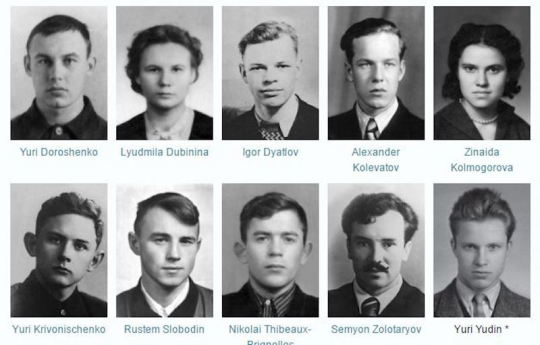
On January 23, 1959, 10 members of the Urals Polytechnic Institute in Yekaterinburg, who were all experienced mountaineers, went on a 200-mile hiking trip, according to the BBC.
One of the students turned back due to joint pain but the other nine—seven men and two women—ventured further into the wilderness led by 23-year-old engineering student Igor Dyatlov.
Investigators reportedly found camera film and personal diaries on the scene when they arrived a few weeks later. These showed that the group had set up camp on February 1 on the slopes of the mountain Kholat Saykhl, meaning "Dead Mountain" in the local Mansi language.
The search team also found a tent barely standing in the snow that seemed to have been cut open from the inside.
The first body was found near a cedar tree the next day while the rest were discovered over the next few months as the snow melted. But all nine bodies were found scattered in a bizarre state of undress.
Some had their skulls and chest smashed open while two had missing eyes and one had a missing tongue. Some were ruled to have died from their injuries while others died of hypothermia.
The Soviets reportedly kept the criminal investigation hushed up with the cause of deaths being ruled as an "unknown natural force," according to National Geographic.
Many have since explored different theories and conspiracy theories involving aliens, katabatic winds, a romantic dispute, Yeti attacks, slaughter by local tribesmen, infrasound-induced panic, and Soviet military experiments.
But look here there has been a yeti sighting where the victims were camping at and by the looks of it this picture could've been taking around the year the victims died looking at the graphics
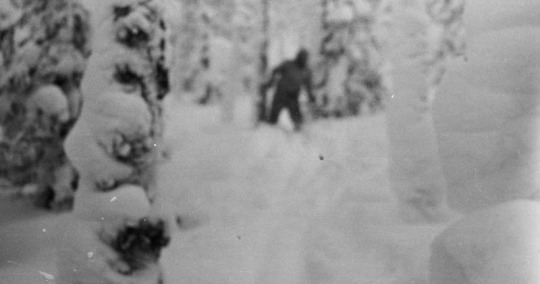
but as you could see it as in the same place where they had died at what do you think
#5G and coronavirus#novel coronavirus#coronavirus#COVID 19#COVID19#Dunning Kruger#Dunning Kruger Effect#conspiracy theories#conspiracy theory#conspiracy theorists#science
1 note
·
View note
Text
Dyatlov Pass Incident

On January 25, 1959, nine Russian students set out on a strenuous cross-country skiing trip across the Otorten Mountain range, in the northern Urals. Eight days after they were due to arrive at their end destination a search party set out to find the missing students. Fighting against the falling snow and sub-zero temperatures the search party finally came upon the flapping remains of a tent pitched on the uppermost slope of Kholat Syakhl, or “Mountain of the Dead” in the native language of northern Siberia. The tent, the search party discovered had been ripped apart, torn to shreds from the inside out.
This was to be the first riddle in an ever-expanding puzzle. The case became known as the “Dyatlov Pass Incident”, and the unfathomable deaths of nine young mountaineers whose cross-country skiing trip ended in a tragedy so horrifying and perplexing that it has mystified experts, and indeed the world ever since.
The group had initially set out for a cross-country skiing trip on January 25th by taking a train to Ivdel in the center of the northern province of Sverdlovsk. From there, they caught a truck to the last settlement of Vizhai and set out for Otorten Mountain on January 27th.
The team consisted of ski instructor Semyon Zolotariov, three engineers (Rustem Slobodin, Yuri Krivonischenko, and Nicolai Thibeaux-Brignolles) and five students from the Ural Polytechnic Institute (Yuri Doroshenko, Zinaida Kolmogorova, Lyudmila Dubinina, Alexander Kolevatov, and Yuri Yudin). The expedition was led by 23-year-old Igor Dyatlov, for whom the pass would eventually be named. Although Yudin stayed behind at the settlement due to illness, all members were experienced with long ski tours and mountain expeditions. They were more than prepared for the trip, but not the mysterious fate that awaited them in the snow.
After skiing across frozen lakes and uninhabited wilderness, the group began moving through the pass on February 1st. Although they had planned to make camp on the other side, a snowstorm with low visibility pushed them up the slope of a mountain called Kholat Syakhi or “Dead Mountain” in Mansi. Realizing their mistake, they decided to camp on the slope rather than a forested area downhill that would have provided better shelter. Yudin remarked after the fact that it was likely because Dyatlov didn’t want to lose the ground they’d gained.
The film rolls and journals that they left behind paint a picture of high-spirited adventurers exhilarated by a breath-taking landscape. With evidence that they set up camp at around 5 PM, investigators believe the group ate dinner around 7 PM before settling down for the night despite frigid temperatures of less than 5 degrees Fahrenheit and wind chills well below zero.
What happened next is unclear, but forensic pathologists estimate that the central event occurred between 9:30 and 11:30 PM. At that point, something terrified the skiers as they were sleeping, and they ripped their way out of the tent and into the freezing night without turning back for coats, shoes, or supplies. As experienced mountaineers, they would have known that they needed protection, so whatever awoke them must have seemed a mortal peril.
Their footprints in the snow show that they initially retreated down the slope to a large pine on the edge of a forest, beneath which they likely shared clothes before starting a fire. Based on wounds on their hands, Doroshenko and Krivonischenko climbed the tree to get a better view of the campsite, but both soon succumbed to exposure. At some point, Dyatlov and two others attempted to retreat back to the tent, but each died in the snow before they could reach their destination.
The remaining team members Zolotariov, Thibeaux-Brignolles, Kolevatov, and Dubinina stripped the clothing from their deceased friends and moved toward the forested area for shelter, before eventually descending into the ravine where they died. Zolotariov, the last surviving member of the expedition perished shortly after from internal trauma and hypothermia.

Before leaving for the trip, Dyatlov had scheduled the team to return and telegraph their arrival in Vizhai no later than February 12th. However, it was only when relatives demanded action that the Ural Polytechnic Institute began a search and rescue operation that soon expanded into military and civilian authorities. On February 25th, a helicopter pilot spotted the group’s campsite, and investigators found eight or nine sets of footprints circling the badly-damaged tent, which still contained the team’s belongings. They followed the group’s tracks to discover a naked Doroshenko and Krivonischenko by the long-dead fire. They then discovered the snow-covered bodies of Dyatlov, Slobodin, and Kolmogorov at a distance of 200, 400, and 680 meters from the tent, respectively.
After an exhaustive search, three months later, on May 4, the final four bodies were discovered beneath 12 feet of snow in a ravine 250 feet from the tent. They were fully clothed, with items taken from the other members.
Of the four, Dubinina and Zolotariov had crushed chests without any soft tissue damage, and Thibeaux-Brignolles had major skull damage. The doctor who inspected them at the time noted that the force would have been equivalent to a car crash. More disturbingly, Dubinina was missing her tongue, eyes, and other facial tissue. The team’s clothing also had high traces of radiation, and reports noted scrap metal in the area, as well. Although a legal inquest was filed, Soviet investigators were pressured to close the case quickly, and the files were soon archived and classified.
The inquest’s vague conclusion was that the nine deaths were caused by a “compelling unknown force”. At the same time, the very popular region where the bodies were found was closed for three years afterwards, feeding suspicious that something strange had happened there. As a result, the Dyatlov Pass Incident remains a controversial one, with many different interpretations of what happened. What compelled the group to race bear-foot and half-naked into a blisteringly cold night? Some of the most prominent theories include the following:
Paradoxical undressing could explain why 6 of the 9 skiers died from hypothermia, as one-fourth of hypothermia victims remove their clothes due to a false sense of heat.
Some proposed that they were attacked by Mansi tribesmen for unknown reasons and that the Russian government covered it up to benefit land negotiations.
The lead Soviet investigator argued that the group was the victim of aliens, as hikers in nearby areas reported orange spheres in the sky on that same night.
Yudin believes that his friends accidentally entered a covert military testing ground, whose weapon shocked and injured them in the middle of the night.
Many mountaineers have argued that the group’s death resulted from avalanche paranoia, such that they fled from a distant rumbling and became lost in the snow.
A more recent scholar has proposed that the winds around nearby mountains created an infrasound phenomenon called a vortex street that induces panic attacks.
The main difficulty with each of these explanations is the lack of signs of struggle, of animal or human presence, or any clear evidence of what caused the deaths of these nine individuals. Whether it was one of the above explanations or a Siberian Yeti looking for friends, the difficult truth is that we will never really know.
Still, several journalists and researchers have attempted the seemingly impossible work of untangling this mystery but have faced other kinds of difficulties. In particular, Yuri Yarovoi’s 1967 novel dramatized the events based on his experiences as an official photographer for the search party but was heavily censored by the Soviet government. Others have found that much of the files from the original investigation have since gone missing.
In response to the lack of action on this case, Yuri Kuntsevitch founded the Dyatlov Foundation to push for the case to be re-opened and for lost files to be recovered, based on his own experience attending the funerals for the skiers in 1959. At a conference held by the Dyatlov Foundation in 2008, Yuri Yudin, surviving searchers for the group, and technical experts came to the consensus that their deaths were the unintended consequence of a secret military weapons test. Yet despite this, and without conclusive proof, the extraordinary events that took place on that fateful night continues to make the “Dyatlov Pass Incident” one of the great mysteries of the 20th Century.
80 notes
·
View notes
Text
The Top 10 Greatest Russian Mysteries of All Time
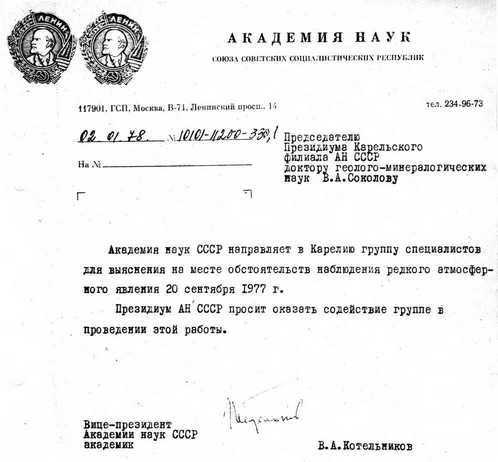
Russia is a vast country, by far the largest country on earth in terms of land mass. The Soviet Union was much larger even. It's not surprise that some of the most famous unsolved mysteries in the world come out of that part of the planet. Join us as we glance at 10 of the most famous unsolved mysteries from there.
10 - Arkaim
Photo of Arkaim by Rafikova m - Own work, CC BY-SA 4.0 Arkaim is an ancient citadel built nearly 4,000 years ago that is full of mystery. The entire city was built around the spiritual idea of "reproducing the model of the universe" which was derived from ancient Indian literature. It was built in three concentric rings and featured the ancient swastika religious symbol found throughout the region at the time. It held as many as 2,500 people at the time, making it the largest citadel in the region. The city has also been associated with ancient Aryan culture (not the Hitler variety) and may have been the source of Vedic knowledge in India as well as the Asgard mentioned in ancient Germanic literature.
9 - Russian Ghost Cities
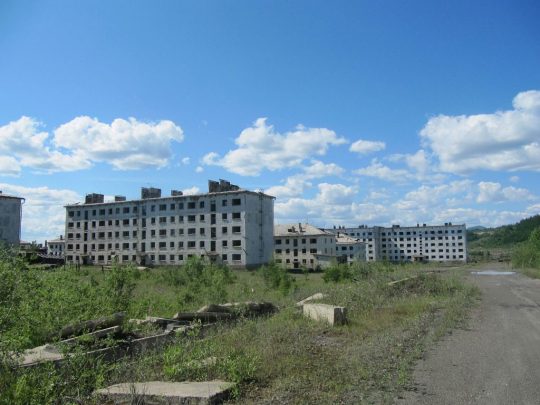
Photo By Laika ac from USA - Kadykchan, CC BY-SA 2.0 The USSR or Soviet Union built dozens of cities with controlled access, now known as Ghost Cities. These cities were completely cut off from the outside world except for gated roads coming in and out of the towns. Most were built around nuclear power or research centers. These towns are nearly all abandoned now, a testament to the iconic Brutalist architecture of the period.
8 - Lake Vostok
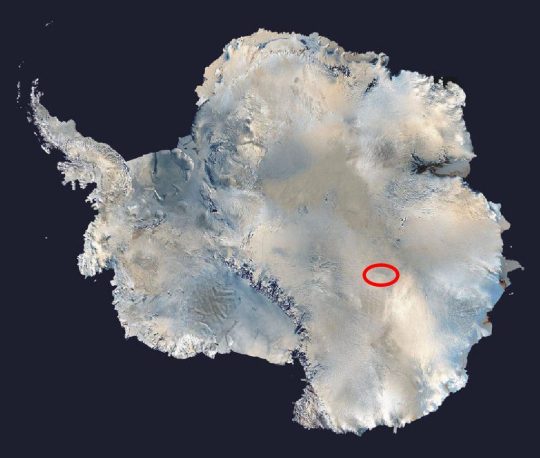
Lake Vostok is by far the most remote location heavily researched by Russian scientists. Lake Vostok is not in Russia. It is a lake under about 2.5 miles of ice. Bizarrely enough, Russian researchers have been fascinated with drilling through the ice to see what was underneath. Beginning in the 1950s until 2011, from the height of the Cold War to Putin's Russia, they drilled through the ice to see what ancient forms of life may lie underneath. The unrelenting focus on getting through the ice of a lake in Antarctica has left many of us scratching our heads.
7 - The Petrozavodsk Phenomenon

The Petrozavodsk object stands out in UFO research as one of the most puzzling and well documented cases of all time. On September 20th, 1977, one of the most widely viewed celestial events of all time unfolded over the city of Petrozavodsk, Russia (The USSR at the time). The event was witnessed from Copenhagen, Denmark all the way to Helsinki in Finland. According to eyewitnesses, 48 unidentified luminescent objects appeared in the atmosphere starting around 1:00 AM. The objects were observed for over two hours in various cities around the region. They appeared to shift direction abruptly, sometimes being stationary and sometimes traveling at enormous speeds. They were witnessed by military officials as well and there were official investigations into the issue. Nearly all of the eye witnesses also reported that the object emitted other glowing objects and that the objects were entirely silent.
6 - Psychotronics: The Russian MKULTRA

The Russian MKULTRA was as large its American counterpart. From 1917 to 2003, the Soviet Union and the modern Russian government spent nearly $1 Billion on "psychotronics", similar to the MKULTRA program in the United States. One area of the program focused on a Soviet idea that the brain emits high-frequency electromagnetic waves which can be received by other brains. Research seemed to show that it could change the magnetic polarity of hydrogen nuclei and stimulate immune systems in various organisms. They even made a device which could store and generate the energy, known as a "cerpan".
5 - The Voronezh UFO

On September 27th, 1989, a UFO appeared to a group of children in the city of Voronezh in the Soviet Union. The children report taht the craft landed in front of them, a three eyed alien popped out with a robot. The alien mind controlled another witness by freezing them in their tracks. The craft then left and returned five minutes later to abduct a 16 year old boy. There were as many as 12 eyewitnesses to all of that. Interestingly, the craft was also reported by the local police department as well.
4 - UVB-76: The Buzzer
Somewhere in Russia, there is a radio tower which has been broadcasting an inexplicable series of sounds since at least 1973. To really grasp the strangeness of it, listen to the example audio above. The sound has evolved over time. It was mostly a chirping sound until 1990, where it changed to a buzzer sound. Nobody knows what on earth it means. One interesting detail is that, on occasion, conversations have been heard in the background which seems to indicate that the sound is going through an open mic.
3 - Nano Spirals and Coils of the Ural Mountains

An example of a nanocoil found in the Ural Mountains. In the mysterious Ural Mountains, where our number one mystery also took place, researchers from the Russian Academy of Sciences discovered thousands of tiny nano-components which appear to be designed and very precisely manufactured. Dating to about 300,000 years ago, there is no known natural explanation for how they got there or what they were even designed to do. The objects, also known as Out of Place Artifacts or Ooparts, continue to amaze scientists. There are coils, shafts, spirals and other mechanical parts which are so small, they can only be appreciated with a microscope.
2 - The Tunguska Event
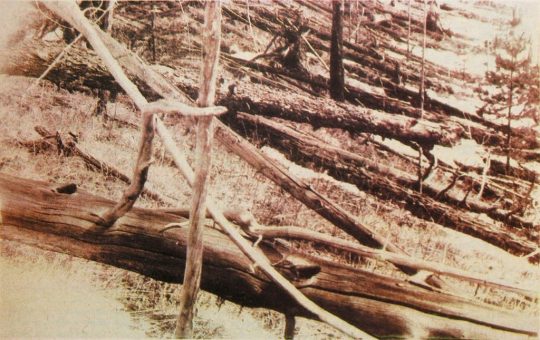
The Tunguska Event was a massive explosion in remote Siberia which still baffles scientists. On June 30th of 1908, there was a massive explosion in Siberia which knocked down 80 million trees, covering an area of 830 square miles. The explosion had the power of as many as 30 megatons of energy, more than 1,000 times the energy of the atomic bomb which was dropped on Heroshima. This is, of course, well before any atomic weapons had been invented by humans. Speculation has ranged from UFOs to a meteorite exploding before it impacted the ground since there is no crater.
1 - The Dyatlov Pass Incident

The Dyatlov Pass Incident is the most mysterious Russian event of modern times. The Dyatlov Pass Incident is without a doubt one of the greatest unsolved mysteries of the 20th Century. 10 skiers from the Ural Polytechnic Institute set out to travel to a nearby ski town. The trip was not thought to be dangerous. One turned back due to illness and the other nine were all killed by an "unknown compelling force". Camping on the side of Dead Mountain, something forced the hikers to run out of the tent in a hurry. Their tent was cut open from the inside. Two of the hikers were found near a fire pit in only their underwear. One hiker had high levels of radiation on his clothing. Three hikers suffered massive crushing injuries but had no signs of physical violence. Read our full article on The Dyatlov Pass Incident here. Read the full article
#aliens#arkaim#featured#ghostcities#lakevostok#nano-spirals#Petrozavodsk#psychotronics#russia#russianhikers#sovietunion#TheBuzzer#tunguskaevent#ufo#uralmountains#UVB-76#Voronezh
3 notes
·
View notes
Photo

history aesthetics
DYATLOV PASS INCIDENT
The Dyatlov Pass incident refers to the unsolved deaths of nine ski hikers in the northern Ural Mountains in the Soviet Union (now Russia) between 1 February and 2 February 1959. The experienced trekking group, who were all from the Ural Polytechnical Institute, had established a camp on the slopes of Kholat Syakhl. On February 26, the searchers found the group's abandoned and badly damaged tent. It was empty, and all the group's belongings had been left behind. Investigators said the tent had been cut open from inside. Eight or nine sets of footprints, left by people who were wearing only socks, a single shoe or were even barefoot, could be followed, leading down toward the edge of a nearby woods, on the opposite side of the pass, to the north-east. After the group's bodies were discovered, an investigation by Soviet Union authorities determined that six had died from hypothermia while the other three showed signs of physical trauma. One victim had a fractured skull; two others had major chest fractures. Additionally, another team member was missing her tongue and eyes. The investigation concluded that an "unknown compelling force" had caused the deaths. Numerous theories have been put forward to account for the unexplained deaths, including animal attacks, avalanche, infrasound-induced panic, military involvement, or some combination of these.
#historyedit#history#1950s#*mine#THIS HAUNTS MY SOUL#my heart is pierced by queuepid#Dyatlov Pass incident
191 notes
·
View notes
Text
A 62-year old Russian mystery (and distrustful dread) has been tended to
In 1959, a social event of nine Russian wayfarers was killed in an overnight scene in the Ural Mountains.
Experts have finally attested that their ends were a result of a lump heavy slide achieved by uncommon breezes.
In February 1959, a social affair of nine pioneers traversed Russia's Ural Mountains as a part of a skiing effort. The cultivated travelers, all used at the Ural Polytechnical Institute, were driven by Igor Dyatlov. On the evening of February 1, every one of the nine appear to have gotten away from their tents into the Arctic temperatures, for which they were unprepared. None persevere.
Click here: Read this article 👇🏻
0 notes
Text
Has Science Solved One of History's Greatest Adventure Mysteries?
Robin George Andrews, reporting for National Geographic: A 62-year-old adventure mystery that has prompted conspiracy theories around Soviet military experiments, Yetis, and even extraterrestrial contact may have its best, most sensible explanation yet -- one found in a series of avalanche simulations based in part on car crash experiments and animation used in the movie Frozen. In an article published this week in the journal Communications Earth and Environment, researchers present data pointing to the likelihood that a bizarrely small, delayed avalanche may have been responsible for the gruesome injuries and deaths of nine experienced hikers who never returned from a planned 200-mile adventure in Russia's Ural Mountains in the winter of 1959. In what has become known as the Dyatlov Pass incident, ten members of the Urals Polytechnic Institute in Yekaterinburg -- nine students and one sports instructor who fought in World War II -- headed into the frigid wilderness on a skiing and mountaineering expedition on January 23, 1959. One student with joint pain turned back, but the rest, led by 23-year-old engineering student Igor Dyatlov, continued on. According to camera film and personal diaries later found on the scene by investigators, the team made camp on February 1, pitching a large tent on the snowy slopes of Kholat Saykhl, whose name can be interpreted as "Dead Mountain" in the language of the region's Indigenous Mansi people. The nine -- seven men and two women -- were never heard from again. When a search team arrived at Kholat Saykhl a few weeks later, the expedition tent was found just barely sticking out of the snow, and it appeared cut open from the inside. The next day, the first of the bodies was found near a cedar tree. Over the next few months, as the snow thawed, search teams gradually uncovered more spine-chilling sights: All nine of the team members' bodies were scattered around the mountain's slope, some in a baffling state of undress; some of their skulls and chests had been smashed open; others had eyes missing, and one lacked a tongue. Each body was a piece in a grim puzzle, but none of the pieces seemed to fit together. A criminal investigation at the time blamed their deaths on an "unknown natural force," and the Soviet bureaucracy kept the case quiet. The lack of detail about this shocking event, an apparent massacre that transpired in a deeply secretive state, gave rise to dozens of long-lived conspiracy theories, from clandestine military tests to Yeti attacks.


Read more of this story at Slashdot.
from Slashdot https://ift.tt/36mJmDC
0 notes
Text
The 100 Most Popular Free Online Courses of 2019
It’s been eight years since a few Stanford professors decided to offer their courses online for free. These courses are now known popularly as MOOCs or Massive Open Online Courses.
And since then, over 900 universities have launched 13,500 online courses. These courses have been taken by 110 million learners.
Not all of these courses are as free as they used to be. Some now charge for certifications or require you to pay to access the full course materials. But you can still audit them for free.

I’ve been keeping track of these courses the entire time over at Class Central - ever since free online courses rose to prominence. It's been 8 years since I founded Class Central, and have helped more than 20 million learners decide which online courses to take.
Methodology: How we determined the Top 100 Free Courses of 2019
In the first step, we went through Class Central’s database and made a list of all the courses that were offered for the first time ever in 2019. We found that 450 universities around the world have now launched more than 2,500 courses.
Then Suparn wrote scrapers to collect enrollment numbers for three different course providers: Coursera, edX, and Swayam. Each of these providers show how many students are enrolled on their course pages. These three providers alone registered around 5 million enrollments for courses launched in 2019.
Along with this, we also explored data from our users. Most importantly: how many times a course has been bookmarked on Class Central.
Using the provider's enrollment data and our own bookmarks data, we came up with a list of 100 most popular courses of 2019 - a wide assortment from 68 universities.
You can also find this list on Class Central which I built using Class Central’s Custom List feature. Not all the courses on this list might be available, but if you bookmark a course on Class Central, then we will let you know when it is offered next.
And now... 2019's Most Popular Online Courses
Here are the most popular free online university courses of 2019 (not ordered by popularity).
Understanding Multiple Sclerosis (MS) from University of Tasmania ★★★★★(246)
Differential Equations for Engineers from The Hong Kong University of Science and Technology ★★★★★(32)
Teaching English: How to Plan a Great Lesson from British Council ★★★★★(125)
Understanding IELTS: Speaking from British Council ★★★★★(26)
The Art of Structural Engineering: Vaults from Princeton University ★★★★★(17)
Improving Your Study Techniques from University of Groningen ★★★★★(20)
Mathematical Economics from Doon University, Dehradun ★★★★★(75)
Constitutional Interpretation from Princeton University ★★★★★(16)
Happier Employees and Return-On-Investment Course from The University of Texas at Austin ★★★★★(10)
Gender and Sexuality: Applications in Society from The University of British Columbia ★★★★★(48)
The IB Extended Essay: Managing your Research Project from University of Leeds ★★★★★(32)
Agile Leadership Principles from University System of Maryland ★★★★★(124)
ANIMATIONs from Banaras Hindu University ★★★★☆(61)
Python and Statistics for Financial Analysis from The Hong Kong University of Science and Technology ★★★★☆(58)
Unlocking Information Security: Part Ⅰ from Tel Aviv University ★★★★★(2)
Digital Security and Human Rights from Amnesty International ★★★★★(1)
Fundamentals of Statistics from Massachusetts Institute of Technology ★★★★★(1)
Herbal Medicine from University of Minnesota ★★★★★(1)
Ideas for a Better World: Leading Change Through Policymaking from British Council ★★★★★(1)
Ethical Hacking from Indian Institute of Technology, Kharagpur ★★★★★(1)
Data Analysis: A Practical Introduction for Absolute Beginners from Microsoft ★★★★☆(1)
The Tudors from University of Roehampton ★★★★☆(1)
C for Everyone: Programming Fundamentals from University of California, Santa Cruz ★★★★☆(1)
Hacking Exercise For Health. The surprising new science of fitness. from McMaster University ★★★★☆(2)
Python for Data Science and AI from IBM ★★★☆☆(1)
Critical thinking: reasoned decision making from Tecnológico de Monterrey ★★☆☆☆(1)
Brand Identity and Strategy from IE Business School
Weight Management: Beyond Balancing Calories from Emory University
Introduction to Artificial Intelligence (AI) from IBM
Introduction to TensorFlow for Artificial Intelligence, Machine Learning, and Deep Learning from deeplearning.ai
Applying Data Analytics in Marketing from University of Illinois at Urbana-Champaign
Getting Started with AWS Machine Learning from Amazon Web Services
The Language of Design: Form and Meaning from California Institute of the Arts
Developing a Systems Mindset from University of Colorado Boulder
Introduction to Android graphics from Imperial College London
The Neuromarketing Toolbox from Copenhagen Business School
Empowering Yourself in a Post-Truth World from State University of New York
Introduction to Self-Determination Theory: An approach to motivation, development and wellness from University of Rochester
Counseling Practice and Research from Seoul National University
China’s Political and Intellectual Foundations: From Sage Kings to Confucius from Harvard University
Blockchain and FinTech: Basics, Applications, and Limitations from The University of Hong Kong
[email protected]: Basic Job Interview Skills from Hong Kong Polytechnic University
Child Protection: Children’s Rights in Theory and Practice from Harvard University
Freedom of Expression and Information in the Time of Globalization: Foundational Course from Columbia University
CS50 for Lawyers from Harvard University
Women Making History: Ten Objects, Many Stories from Harvard University
Advanced Android with Kotlin from Google
The New World of Arnold Schönberg’s Piano Music from Stanford University
Exploring GraphQL: A Query Language for APIs from Linux Foundation
Rhetoric: The Art of Persuasive Writing and Public Speaking from Harvard University
The Future of Work: Preparing for Disruption from The World Bank
Research and Development in Discrete Industries
Backyard Meteorology: The Science of Weather from Harvard University
Academic writing for clarity and meaning from University of the Witwatersrand
The Health Effects of Climate Change from Harvard University
Mindfulness and Resilience to Stress at Work from University of California, Berkeley
Machine Learning with Python: from Linear Models to Deep Learning from Massachusetts Institute of Technology
Inclusive Education: Essential Knowledge for Success from Queensland University of Technology
Data Analysis for Decision Making from University System of Maryland
Introduction to Encryption and Cryptography from Raspberry Pi Foundation
Introduction to Self-Driving Cars from University of Toronto
Cannabis, Mental Health, and Brain Disorders from University of Colorado Boulder
Managing ADHD, Autism, Learning Disabilities, and Concussion in School from University of Colorado System
Applying Data Analytics in Finance from University of Illinois at Urbana-Champaign
Introduction to Applied Machine Learning from Alberta Machine Intelligence Institute
Introduction to Climate Change and Health from Yale University
Python and Machine Learning for Asset Management from EDHEC Business School
Negotiation skills: Negotiate and resolve conflict from Macquarie University
Foundational Skills for Communicating About Health from University of Michigan
Hypothesis-Driven Development from University of Virginia
Exploring Renewable Energy Schemes from University of Pennsylvania
Improving Your Statistical Questions from Eindhoven University of Technology
Exploratory Data Analysis with MATLAB from MathWorks
Machine Learning from The University of Texas at Austin
Personal growth basics (for people with limited health abilities) from Ural Federal University
Financial Development and Financial Inclusion from International Monetary Fund
Steps in Japanese for Beginners1 Part1 from Waseda University
GMBA824 Know your customers from Macquarie University
Nutrition: Eating to Live Well from Tapei Medical University
Food and Mood: Improving Mental Health Through Diet and Nutrition from Deakin University
An Introduction to Programming through C++ from Indian Institute of Technology Bombay
Artificial Intelligence Search Methods For Problem Solving from Indian Institute of Technology Madras
Programming in Java from Indian Institute of Technology, Kharagpur
Joy of computing using Python from Indian Institute of Technology, Ropar
Introduction to Machine Learning (IITM) from Indian Institute of Technology Madras
Programming, Data Structures And Algorithms Using Python from Chennai Mathematical Institute
Python for Data Science from Indian Institute of Technology Madras
Developing Soft Skills and Personality from Indian Institute of Technology Kanpur
Caring for Children Moving Alone: Protecting Unaccompanied and Separated Children from University of Strathclyde
Managing People: Understanding Individual Differences from University of Reading
Digital Transformation in the Classroom from Norwegian University of Science and Technology
From data base to big data from Université Côte d’Azur
Diplomacy in the 21st Century from The Open University
Understanding Gender Inequality from University of Exeter
Successful Negotiation: Essential Strategies and Skills from University of Michigan
Science Communication and Public Engagement from EIT Food
English Pronunciation in a Global World from University of Amsterdam
America’s Opioid Epidemic: From Evidence to Impact from Johns Hopkins University
Understanding ADHD: Current Research and Practice from King’s College London
End of Life Care: Challenges and Innovation from University of Glasgow
via freeCodeCamp.org https://ift.tt/2LY9YRd
1 note
·
View note
Photo



The Dyatlov Pass incident refers to the unexplained deaths of a group of 9 highly experienced hikers from the Ural Polytechnic Institute. They died on an expedition in the Ural Mountains in 1959. The official report was that an “Unknown Compelling Force” caused the hikers to run from their tent in the middle of the night. Six of them died of hypothermia. Another had a fractured skull. One died of brain damage but without any trauma to the skull and a female hiker was missing her eyes and tongue. Four of them had high levels of radiation detected on their clothing. To this day, the true cause of their deaths remains unsolved.
115 notes
·
View notes
Photo

The Dyatlov Pass incident refers to the deaths of nine skiers/hikers in the northern Ural Mountains, in the former Soviet Union, between the 1st and 2nd of February, 1959, due to unclear circumstances. The experienced trekking group, who were all from the Ural Polytechnical Institute, had established a camp on the slopes of Kholat Syakhl. During the night, something caused them to tear their way out of their tents and flee the campsite, all while inadequately dressed for the heavy snowfall and sub-zero temperatures. After the group's bodies were discovered, an investigation by Soviet Union authorities determined that six had died from hypothermia while the other three showed signs of physical trauma. One victim had a fractured skull; two others had major chest fractures. Additionally, the body of another team member was missing its tongue and eyes. The investigation concluded that an "unknown compelling force" had caused the deaths. Numerous theories have been put forward to account for the unexplained deaths, including animal attacks, hypothermia, avalanche, katabatic winds, infrasound-induced panic, military involvement, or some combination of these. The curious footprint patterns leading away from the tent were inconsistent with someone, let alone a group of 9 people, running in panic from either real or imagined danger. In fact, all the footprints leading away from the tent and towards the woods were consistent with individuals who were walking at a normal pace. #mystery #unexplained #mysteries #yeti #universityofcryltozoology #uofcz (at Kholat Syakhl) https://www.instagram.com/p/BxUXT1wl_q3/?igshid=9ff1cbp7qbbj
0 notes
Text
Vyacheslav Tyurin put in charge of Gazprom Invest has been published on Energy Solutions News
New Post has been published on https://www.energybrokers.co.uk/news/gazprom/vyacheslav-tyurin-put-in-charge-of-gazprom-invest
Vyacheslav Tyurin put in charge of Gazprom Invest

March 11, 2019
Vyacheslav Tyurin has been appointed Director General of Gazprom Invest.

Vyacheslav Tyurin was born in 1960 in Kamensk-Uralsky, Sverdlovsk Region. He graduated from Kirov Ural Polytechnic Institute.
In 1991–1999, he held managerial positions at commercial entities based in Nizhnevartovsk and Moscow.
In 1999–2002, he served as Director General of SG-Trans at the Ministry of Energy of the Russian Federation.
He has been part of Gazprom’s team for almost 17 years. In 2002, he became Director General of Gazpromtrans.
Alexander Filin, First Deputy Director General of Gazpromtrans, has been appointed the company’s Acting Director General.
Background
Gazprom Invest, a wholly-owned subsidiary of Gazprom, is the single customer of Gazprom’s major systemic investment projects. The company is engaged in the design, construction and commissioning of gas facilities, as well as industrial and civil engineering facilities.
Gazpromtrans, a wholly-owned subsidiary of Gazprom, is the single railway operator of the Group. It offers freight forwarding services, arranges direct and combined transportation (by one or several modes of transport), and provides for transshipment of cargo in ports.
The company also served as the construction project owner for the Obskaya – Bovanenkovo railroad.
0 notes